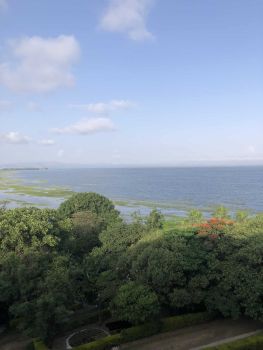
Case Study: Protecting Lake Hawassa Partnership
The Protecting Lake Hawassa Partnership was established in 2018. Read more about the exciting journey partners have embarked on to jointly protect the Lake and its ecosystems.
Lake Hawassa, located in the Ethiopian Rift Valley, is known for its rich biodiversity. Many plant and animal species call the freshwater lake their home. In addition, the lake plays an essential role in the economic development of the region, sustaining a diversity of rural and urban livelihoods. Farming and fishing are the largest sectors of employment, but also tourism and industry are of growing importance. In recent years, rapid economic and demographic growth, coupled with changing climate conditions, are affecting the lake and its sub-catchment. Soil erosion increased in the past decade, largely due to deforestation and unsustainable farming practices. Pollution resulting from poor solid and liquid waste management is another challenge – plastic and other waste from the city and the surroundings find their way into the lake. Case study protecting lake hawassa
Recognizing the urgent need to find solutions, stakeholders started discussing the joint risks they face due to the environmental degradation around the lake and how they could tackle them together. Recognising the need for cross-sectoral efforts to develop lasting solutions, representatives of private, public sector and civil society joined forces in 2018 and decided to form a multi-stakeholder partnership: The Protecting Lake Hawassa Partnership.